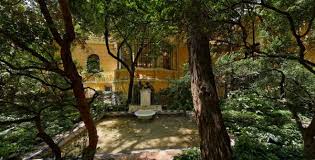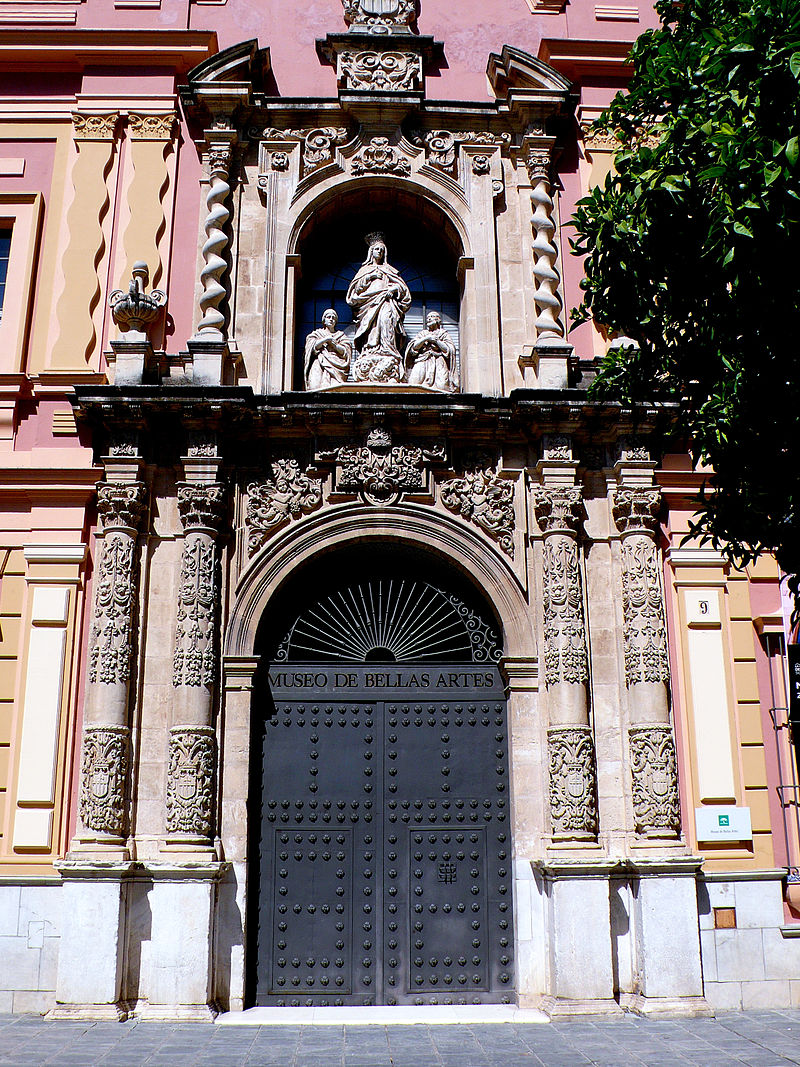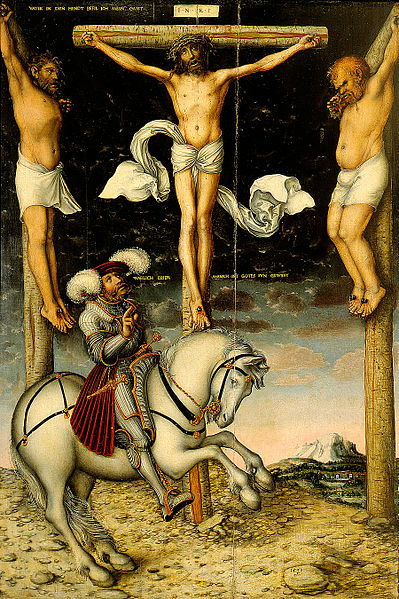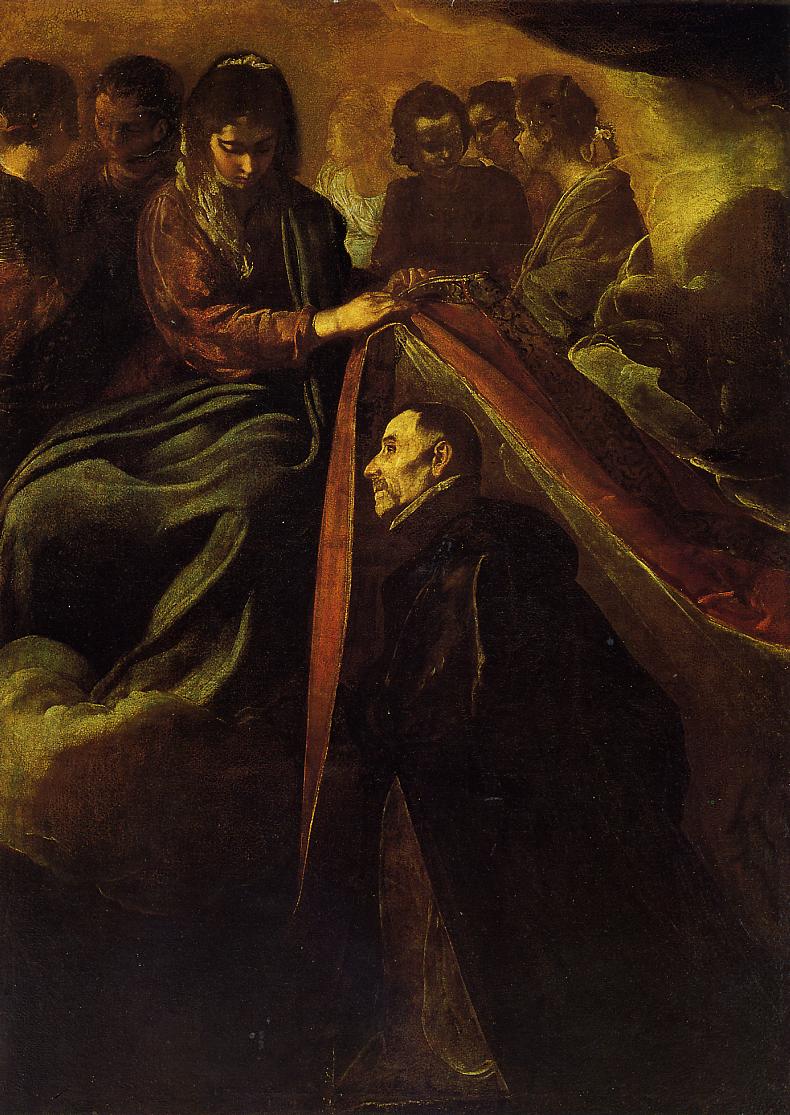
……….when I arrived at the Museo de Bellas Artes in Seville I was pleasantly surprised to see that there was a special exhibition on marking the 400th anniversary of Seville’s great painter Bartolomé Estaban Murillo. It had opened in November 2018 and was still running. The city of Seville had been celebrating the 400th anniversary of his birth for the last twelve months and this exhibition, which ends in April, was the culmination of the celebrations.
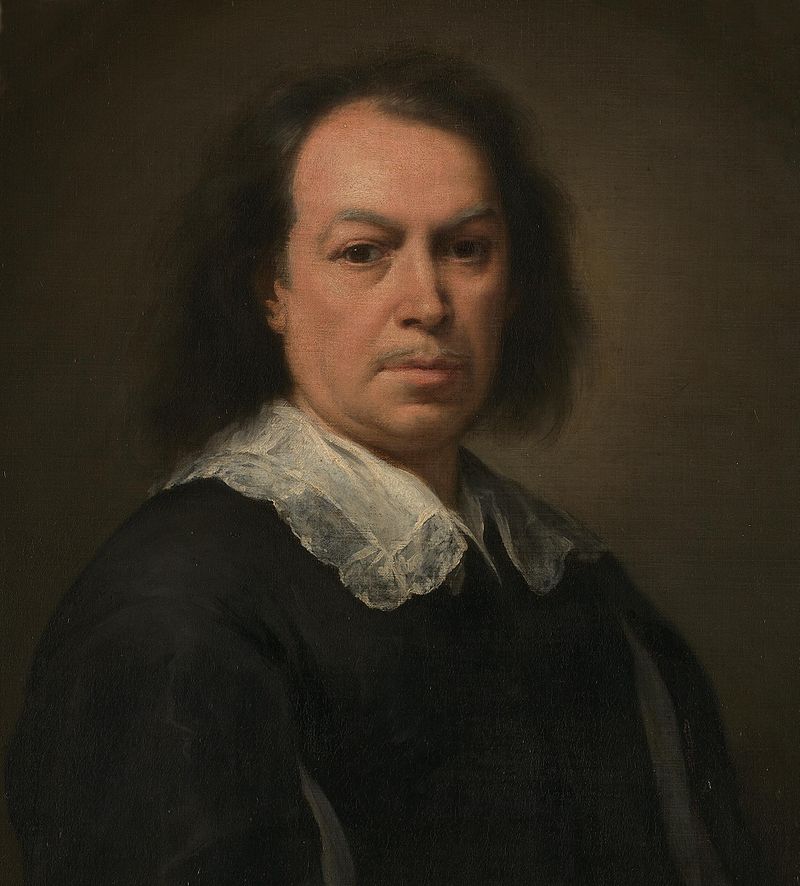
Murillo came from a very large family, the youngest of fourteen children. His father was both a barber and a surgeon. His parents died when he was young and he went to live with a distant relative and artist, Juan del Castillo who started Murillo’s artistic education. He stayed with Castillo until 1639 when his mentor had to move to Cadiz. Now Murillo, aged twenty-two, had to fend for himself and scraped a living by selling some of his paintings. In 1643 he travelled to Madrid where he met Velazquez who was also from Seville and had now become a master of his craft. He took pity on Murillo and let him lodge in his house. Murillo stayed in Madrid for two years before returning to Seville. In 1648, at the age of thirty-one, Murillo married a wealthy lady of rank, Doña Beatriz de Cabrera y Sotomayor. Murillo died in 1682 aged 64. He lived a humble and pious life and was a brave man. On his death he left a son and daughter, his wife having died before him.
 The Seville exhibition was a collection of fifty-five paintings by Murillo from museum collections around the world. The exhibition was divided into nine sections each providing a glimpse of the world through Murillo’s eyes. The sections were designated as Holy Childhood, A family of Nazareth, Glory on Earth, The Immaculate Conception, Compassion, Penitence, Storyteller, Genre painting and Portraiture. It was a journey through his religious works to the social realism of 17th century Seville, which has been described as a city of paupers and saints, of rascals and wealthy noblemen and merchants who, through their wealth, were able to have Murillo paint their portraits.
The Seville exhibition was a collection of fifty-five paintings by Murillo from museum collections around the world. The exhibition was divided into nine sections each providing a glimpse of the world through Murillo’s eyes. The sections were designated as Holy Childhood, A family of Nazareth, Glory on Earth, The Immaculate Conception, Compassion, Penitence, Storyteller, Genre painting and Portraiture. It was a journey through his religious works to the social realism of 17th century Seville, which has been described as a city of paupers and saints, of rascals and wealthy noblemen and merchants who, through their wealth, were able to have Murillo paint their portraits.

In the first section, there was the Prado-owned painting entitled The Good Shepherd, which Murillo completed in 1665. The scene has a rural setting along with classical allusions in the form of archaeological ruins which we can see in the left background. Jesus is portrayed as the boy who exudes an air of determination as he holds his shepherd’s crook in one hand whilst his left-hand lies across the back of the animal. There is a certain gentleness about the scene and the sheep, seen with the boy, represents the Agnus Dei (Lamb of God), which is talked about in the scriptures. The depiction of the lamb as being obedient and submissive is all part of the divine plan.

One of Murillo’s paintings in the Family of Nazareth section was The Holy Family with Infant Saint John, which Murillo completed around 1670 and was loaned to the Seville gallery by Budapest Museum of Fine Arts. This was a pendant painting forming a pair with his work The Flight into Egypt, which was also on show. In the depiction, we see Saint Joseph, in the background, with his carpentry tools. In the foreground, we see the Christ Child and the young Saint John busily tying two sticks together to form a cross. Mary watches over the children as she busies herself sewing. A sense of depth has been added to the composition by the inclusion of a background of mountains and clouds.

In the third section, Glory on Earth we have the Murillo painting The Holy Family (The Heavenly and Earthly Trinities) which was loaned to the museum for this exhibition by London’s National Gallery. This work of art encapsulates the religious theory that Jesus is both God and man and thus belongs to both the Heavenly Trilogy of God the Father, God the Son and God the Holy Spirit as well as belonging to the Earthly Trinity – the family from Nazareth as seen in the painting with Jesus’ closeness to his mother, the Virgin Mary and his father, her husband Saint Joseph.

Murillo completed many paintings featuring the Virgin Mary and many were on show at the exhibition. The Annunciation by Murillo, which he completed around 1660 and had been loaned out by the Prado, was a great example of this focus on the Mother of God.

The Dulwich Gallery-owned work by Murillo entitled The Virgin and the Rosary was also on view. In this work we see the Virgin seated on a throne of clouds floating in the celestial sphere and unlike other versions of this work by the Seville painter, clouds and angels have now been added to become her throne and footstool.

One of my favourite pieces of religious art by Murillo, which was at the exhibition, was Mater Dolorosa an artwork, which was part of a private collection belonging to a Dutch family. Mater Dolorosa or Our Lady of Sorrows refers to the sorrows in the life of the Virgin Mary and is a key subject for what is termed Marian art in the Catholic Church. In 1939 when the painting was bought from the Amsterdam art dealership, de Boer, by a private Dutch buyer, there was some doubt as to whether this painting was by Murillo but the German art historian August Lieberman Mayer, who was one of the most prominent art historians of the early 20th century and the era’s leading specialist for 17th century Spanish painting, wrote to the new owner stating his belief that it had been painted by Murillo. In his letter dated July 12th, 1939, he wrote:
“…I deeply regret, that actually I cannot make a new edition of my book in „Klassiker der Kunst“, but I hope to publish another monography of Murillo in Spain“ The picture is, in my opinion, a very fine, well preserved, genuine and most characteristic work by B. Murillo, executed most probably about 1668, the period, I consider the best and most powerful of the master. I reserve me the right of the first publication of this important and impressive work..”
Despite Mayer’s opinion, many art scholars still question his attribution. August Mayer never did publish another work on the Spanish master. As a Jew, he was forced to leave his offices in Munich by the Nazis. He then fled to Paris in 1936 but was later arrested and was deported to Auschwitz in 1944 where he died.
I am not a great lover of religious art, probably not due to the quality of the work but more to do with the subject matter. I was therefore very pleased that after seven rooms of religious painting the final two rooms were devoted to Murillo’s genre paintings and his portraiture.

I especially liked Murillo’s painting A Peasant Boy Leaning on a Sill, which he completed around 1675. When London’s National Gallery acquired this work in 1826, it was the first Spanish painting to enter the museum’s collection. The National Gallery of London loaned this to the Museo de Bellas Artes for the Murillo exhibition. This striking depiction of a cheerful boy is related to Murillo’s depictions of street urchins in his larger canvases. We see the boy at a window, the implication being that there is a lot going on that we are not aware of and so we have to be satisfied with what we have before us. So what else is going on? What has been excluded from the depiction? What is the boy looking at? Some would have us believe that this work had a companion piece painted by Murillo, which was to be hung to the right of this one which would allow us to see what the boy was looking at.

That suggested pendant piece was Young Girl Lifting Her Veil, (which is privately owned and was not included at the Seville exhibition). However, many art historians cast doubt on the two paintings being pendant pieces but the fact is that they were painted around the same time, they are both half-length depictions and are of similar size. I have included the Young Girl Lifting her Veil and let you decide whether the two paintings hung side by side on a wall would add to your belief that they were pendant pieces. Was this beautiful girl the subject of the boy’s gaze? Some think that the boy’s demeanour has an air of mischief about it and his expression was not instilled with innocent sincerity, like that of the girl. I will leave you with one further clue. At the sale of the two works at the Peter Coxe London saleroom on March 20th, 1806 of paintings owned by the Marquess of Lansdowne, the catalogue described them as:
“…No.50. Murillo. A Laughing Boy – delicately treated in every part – one of those performances so rare to be met with, & in his best style of perfection.
No.51. Murillo. Portrait of a girl treated with the same tone of harmonious colouring, as the preceding Lot, to which it is a companion, in the same happy effect of management…”
The two paintings were sold at the auction to separate buyers.

The most bizarre painting at the exhibition, and one I particularly like, is Four Figures on a Step, which is owned by the Kimbell Art Museum of Fort Worth, Texas. At first sight, I thought somebody had defaced the painting by adding a pair of thick black spectacles to the woman on the right.
Before us, we have four very different characters. In the central background, we have a young woman. Her face is somewhat distorted into a smile, even a knowing wink, as she raises her scarf over her head. What is the significance of the gesture? Art historians have hypothesised that it is a coquettish gesture whilst others say that that is reading too much into her manner stating that the depiction is a simple scene with a family scrutinising the goings-on in the street outside. However, the scene to many historians is to associate it with one of procurement. Procurement? They would have us believe that the older women with the thick dark glasses, resembles the character of a Celestina, an aged prostitute, madam, and procuress, of Spanish literature. The old procuress, Celestina, comes from the 1499 book La Celestina, which is considered to be one of the greatest works of all Spanish literature, a timeless story of love, morality, and tragedy by Fernando de Rojas. The Celestina is often represented as a crone wearing enormous glasses and a headscarf hence the belief that Murillo’s painting includes a procuress! So, if she is procuring, is she offering the man the pleasures of the young woman? More conservative historians point to the fact that on the contrary to the Celestina idea, the mature woman also resembles the bespectacled characters in Dutch and Flemish genre paintings, which Murillo would have seen.
The possible “procuress” is seen cradling the head of a young boy whose bottom is exposed by his torn breeches. In less liberal times Murillo’s depiction of the bare bottom had offended the public and had been over-painted for reasons of regaining a modicum of modesty but the painting now, after restoration, is seen as Murillo intended.
So the question I leave you with is this depiction simply a portrayal of the colourful characters to be found in the streets of Seville, or does the painting carry a reproachful, message, urging the viewers to avoid enticements of worldly decadences?

In the final room of the exhibition, we have Murillo’s portraiture. Murillo’s earliest dated portrait is a newly discovered canvas, which depicts Juan Arias de Saavedra y Ramírez de Arellano an aristocrat from Seville and one of Murillo’s patrons. The subject of the painting was a knight in the Order of Santiago as indicated by both the red cross on his left shoulder and the pendant with a scallop shell. The portrait is shown as being in a stone frame, which includes the sitter’s coat of arms. Murillo often used this stone-frame device in his bust-length portraiture. Also in the painting are two putti each holding a tablet. The one held by the putti on the left records the age of the sitter as twenty-nine while the one on the right has the date on which the portrait was painted – 1650. Below the portrait, there is a lengthy Latin inscription which is about Saavedra. Saavedra, it states, was a senior minister of the Holy Inquisition and is described in the inscription as a “profound connoisseur of the liberal arts, and of painting in particular”. The inscription also includes a passage by Murillo, which offers convincing proof of the connection between the artist and the nobleman with Murillo admitting his gratitude and sincere regard for Saavedra.
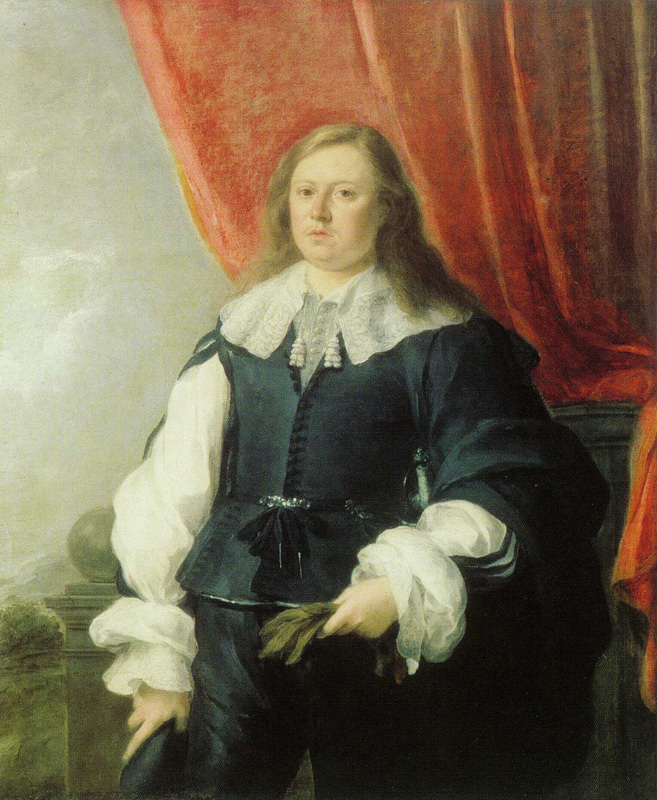
My last offering for this blog is another work of portraiture by Murillo, which was loaned to the Seville museum by the National Gallery of Ireland. The sitter is Josua van Belle. He was born in Rotterdam and became a Dutch shipping merchant who lived for a period in Cadiz and Seville, where this portrait was painted in 1670. Van Belle was a celebrated art collector and amongst his collection of paintings, was Johannes Vermeer’s Woman Writing a Letter, with her Maid, which also resides in the National Gallery of Ireland. This portrait is looked upon as one of Murillo’s finest.
The Museo de Bellas Artes’ exhibition was excellent, full of beautiful masterpieces by Murillo and you have until the last day of March to visit this Sevilla exhibition.


